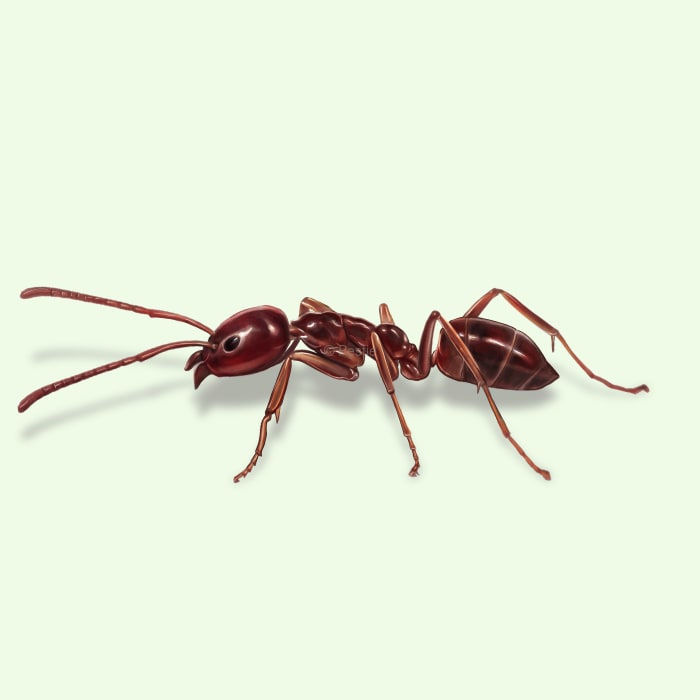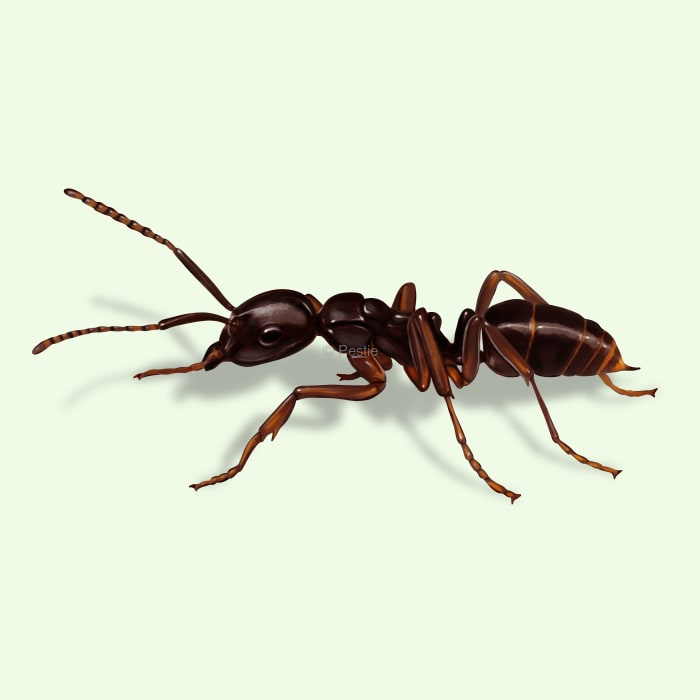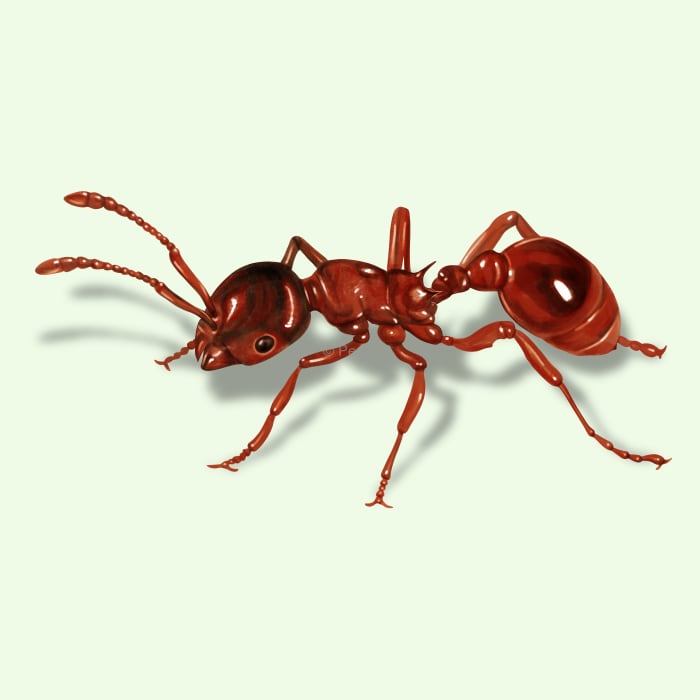How to identify and get rid of ants
Preventing pesky ants from invading your home
Ants seem to always know when and where you accidentally spill something sweet or sticky in your kitchen. Before long, you’ll have a nice ant trail hauling back their goodies to the colony. These social insects, made up mostly of females, live underground and divide up work between rearing larvae, scouting for food, or taking care of the queen. Their numbers in each colony can be as small as a few hundred, all the way up to a few hundred thousand!
Ants are easily identified by their three distinct body parts, bent antennae, and lack of wings. However, even though most ants look like, their behaviors and diet can vary greatly. While most prefer a sweet treat, others prey on insects, harvest seeds, or farm sugary secretions from other insects.
They are a fascinating group of insects that hold many mysteries, but when it comes to keeping them out of your home, that can become a challenge for any homeowner.
How to identify ants
Like all insects, ants have three body parts (head, thorax, and abdomen) and six legs. While ants can vary in their appearance, they all have antennae that are bent like an elbow. The color and size of the ant can help identify which species you are dealing with. Additionally, worker ants are wingless, only the males and virgin queens have wings.
What are the most common ants found in homes?
Ants tend to be the most common pest found in homes, and some are more frequently a nuisance than others.
- Carpenter Ants – These large black ants often nest inside wooden structures, excavating tunnels in wooden beams and posts. They don’t feed on the wood but instead feed on other insects and honeydew from aphids.
- Odorous House Ants – These ants create their nests in walls or under flooring. They have a sweet tooth and are seen raiding your kitchen for anything you’ve accidentally dropped or spilled. If they are squished, they have a similar smell to blue cheese or rotten coconut.
- Pavement Ants – If you’ve ever seen a horde of ants under rocks, a concrete slab, or a sidewalk, then you’ve come across a pavement ant. Also known as sugar ants or grease ants can create colonies with multiple queens, so their numbers can grow fast. They also often invade homes looking for sugary treats or greasy foods.
Fun fact
Did you know that ants don’t have ears? Instead, they feel vibrations through the ground and smell with their antennae. They use chemicals from their bodies to communicate with other members of their colony to tell who is a friend, who is an enemy, and when they need help!
Ants are among the longest-living insects, with some queens living up to 30 years. But don't worry, most ants only live a few weeks.
While the dung beetle is the strongest insect in the world, capable of lifting over 1000 times its own weight, the leaf cutter ant would easily take silver in any weightlifting competition as it can lift 50 times its own weight.
How to get rid of ants
Ants are often the number one pest complaint from homeowners, and they can be difficult to deal with. Often times, ants come into our home for food, water and shelter. Along with using Pestie, here are other ways of preventing ants issues in your home.
- Seal up cracks and crevices around the home
- Clean up trash and garbage, especially any thrown-out food
- Immediately clean up spills and crumbs. Don't forget to check behind/under appliances
- Store food in airtight containers
- Check for leaks and dry areas where water pools
- When using Pestie, apply around any entry points ants can enter
Does baking soda kill ants?
In theory, a cheap ant-killer includes mixing sugar with baking soda. When the ant ingests the baking soda, it will foam inside their gut, causing them to rupture or die. However, this isn’t always a sure way to kill ants, as they may avoid the baking soda, or the sweet bait might attract more ants to that area.
What repels ants?
Online articles offer a lot of advice about what is “supposed” to repel ants, but only a few have been known to actually keep ants at bay. Common household substances include coffee grounds, vinegar, bleach, mint, cinnamon extract, diatomaceous earth, tea tree oil, and citronella oil. However these solutions need to be applied often as they do not have long residual effects and can also be quite messy. Ensure that no area is unprotected, as ants will look for alternative entry points. By using Pestie as your bug barrier you will guarantee that any ant that tries to get into your home won't be able too.
Treat ants with Pestie
If you're still having trouble keeping ants away, the best option is to use a pro-grade, effective pest control solution like Pestie.
Pestie is a do-it-yourself pest control solution that's specially designed to keep ants and other pests away from your home.
With Pestie, you can rest easy knowing that your living space is protected and free of creepy crawlies. And the best part? It's designed for people, pets, and the planet, so you can say goodbye to harsh chemicals and hello to peace of mind!
- Save hundreds compared to traditional annual pest plans
- People, pet, and planet-friendly
- Pro-grade customized formulas




















